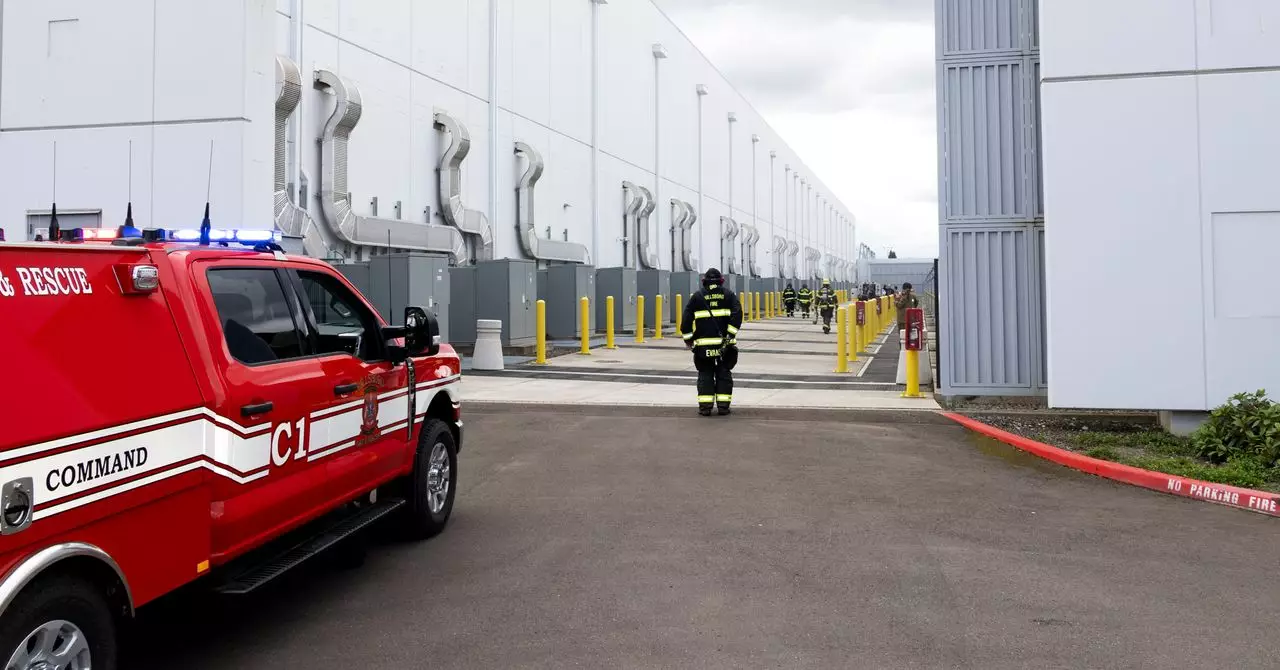In an era where digital dependence is transforming every aspect of daily life, the reliability of data centers has become a silent pillar of modern civilization. Yet, recent events reveal a troubling truth: even the most sophisticated facilities are susceptible to catastrophic failures. The recent fire at the Hillsboro, Oregon data center, operated by digital real estate giant Digital Realty and hosting the servers of Elon Musk’s X, exposes underlying vulnerabilities in the infrastructure that powers our digital economy. This incident challenges the prevalent notion that technical complexity equates to safety, emphasizing instead that complacency can be disastrous.
The incident, which unfolded over hours, was initially perceived as a mysterious blaze originating within a crucial component—the uninterruptible power supply (UPS). Firefighters discovered that the source of ignition likely stemmed from electrical or mechanical failures within a complex power system, not from the more sensationalized lithium-ion battery fires often associated with data centers. This subtle distinction is telling; it underscores the fact that the vulnerabilities are often hidden within the seemingly mundane yet critical elements of infrastructure, such as power supplies and cooling systems. As data centers grow larger and more energy-intensive to meet the demand for artificial intelligence and machine learning applications, these vulnerabilities are amplified. The reliance on large UPS units and intricate electrical systems introduces new risks that might be underestimated or overlooked.
The Hidden Dangers of Overengineering and Overload
The rising demand for generative AI and related computing workloads is forcing data centers to scale up exponentially, often pushing hardware and power supplies to their limits. As Shaolei Ren from UC Riverside pointed out, large batteries like those within UPS units are inherently susceptible to failures caused by electrical faults or thermal stresses. These failures, in turn, can ignite fires that devastate entire server arrays and infrastructure. What’s concerning is the tendency to assume that new technological advancements—such as sophisticated fire suppression systems or robust electrical designs—are enough to prevent such incidents. However, the Hillsboro fire suggests that these assumptions may be overly optimistic.
Furthermore, the incident reveals a critical oversight: inadequate monitoring and cooling can be precursors to disaster. Data centers generate immense heat, and failure to adequately manage thermal loads can cause equipment to overheat, malfunction, and ignite. The fact that the fire was contained within one UPS cabinet, yet still caused significant damage, highlights the importance of continuous temperature assessment, regular maintenance, and proactive failure detection. Too often, facilities place their faith in redundant systems without investing sufficiently in environmental controls—an approach that can be perilous given how complex and interdependent these systems are.
Questioning the Myth of Faultless Modern Technology
While the company behind the facility, Digital Realty, emphasized that the fire was electrical in nature and did not involve lithium-ion batteries, this statement itself underscores a broader issue: the perceived infallibility of modern electrical infrastructure. After all, industrial power systems are designed with safety margins, but these margins can be stretched thin when operating at high loads or under unanticipated stress. The incident demonstrates that even with industry-standard safety measures, failures are possible—sometimes due to subtle mechanical faults or unseen electrical flaws that only manifest under duress.
This incident also calls into question the resilience of the entire ecosystem of hardware vendors and system integrators entrusted with national digital infrastructure. Schneider Electric, a key provider of the power supply system, has so far declined to comment on specifics, further fueling concerns that critical safety details might be underreported or not fully understood. The fact that the fire’s total damage amounted to an estimated $260,000—not including potential long-term operational repercussions—should serve as a wake-up call to industry stakeholders to reevaluate their risk assessments.
Learning from the Unseen—Preparing for the Inevitable
What lessons can be drawn from this incident? First, it is clear that physical infrastructure must be subject to thorough, continuous oversight. Technological advances should not lead to complacency. Regular audits, thermal imaging, and predictive maintenance are not luxuries but necessities for safeguarding data repositories that house the world’s most valuable digital assets.
Second, the industry must embrace transparency and collaboration. Too often, companies downplay incidents or withhold detailed analyses, depriving the community of lessons learned. Open reporting on failures such as this can drive innovations in safety protocols and foster industry-wide improvements.
Finally, the incident signals a broader truth about our dependence on complex electrical systems: the risks are real, and they demand an overhaul of risk mitigation strategies. As the realm of AI and cloud computing expands, so too must the robustness and resilience of the infrastructure that supports it. Ignoring or underestimating these dangers could lead to larger, more damaging failures in the future—failures that threaten the stability of our digital world and, by extension, our societal and economic well-being.

